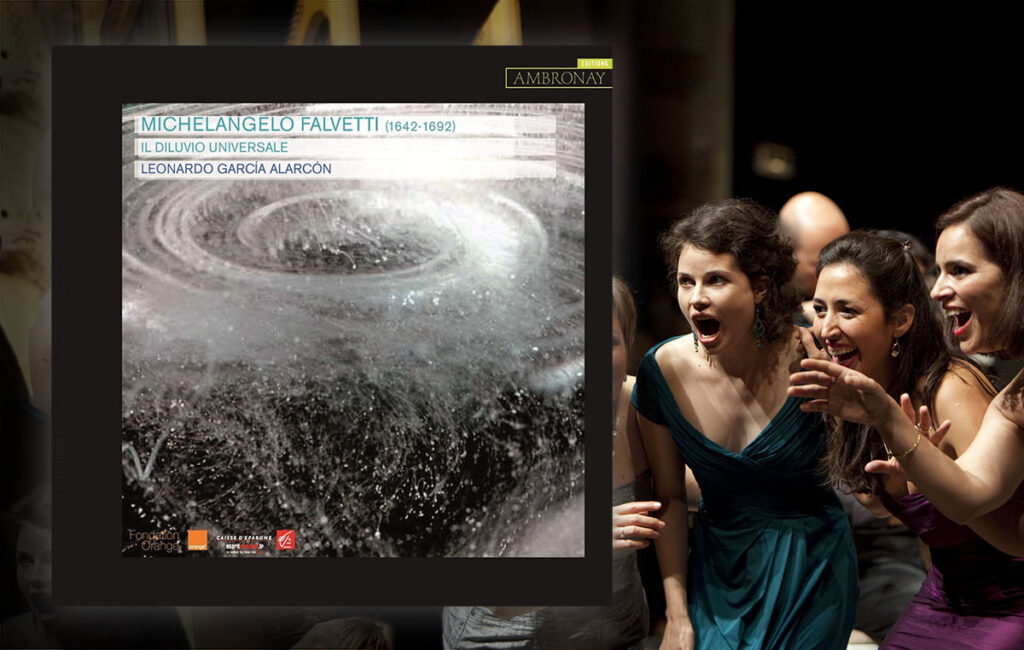


“With his rigour and ambition, the young Argentine conductor does not fail to electrify his artists. Whether it’s the soloists (ideally chosen), the Namur Chamber Choir (always on fire!) or Cappella Mediterranea (incredibly versatile), all the musicians are remarkably impassioned. […] An album that is worth discovering immediately!”
Opéra magazine, November 2011, Cyril Mazin.
Il Diluvio Universale, a “dialogue for five voices and five instruments”, was first performed in Messina in 1682. That same year, Michelangelo Falvetti was appointed choirmaster of the cathedral. He soon found himself at the heart of the city’s musical activities, earning acclaim as a composer and event organiser. Originally from Calabria, he decided to settle in Messina, a city where he had also carried out his studies. When he arrived, the city was still dealing with the consequences of its rebellion against the Spanish crown. The themes of disobedience and divine punishment in Il Diluvio Universale would therefore have resonated with the political context of the time.
The text contains some modern features that can also be found in Arcangelo Spagna’s Discourse on Oratorios (1706): few characters, a concise text and no narrator. In the prologue, the protagonists are Divine Justice and the four elements: Air, Earth, Fire and Water. The dialogue involves Noah, his wife Rad, God, Death and Human Nature. Like in Carissimi’s oratorios, choruses play an important role and are often written in five parts.
The instrumental writing is relatively simple, often homorhythmic, with themes developed by the voices or instruments themselves. One exception is the opening Sinfonia. The chords in the beginning are followed by an episode in imitative counterpoint. The Sinfonia di tempeste also features different parts that enter on the same note, from high register to low, illustrating the gradually rising waters.
The composer paid particular attention to the choir. The writing is elegant and varied, both in terms of the number of voices and style. We can find homophony, counterpoint, and the use of two or three parallel voices and tutti to obtain a particular timbre. Such is the case of the divided chorus “A fuggire, a morire”, which depicts the fear of men who are at the mercy of the waves like a sound fresco. We may also cite the five-voice chorus “E chi mi dà aita”, in which the words “Vi…ta” and “Mor…te” are pronounced in unresolved chords.
Il diluvio universal cannot be characterized as either an oratorio or a classical sacred drama. This score, which was then forgotten for three centuries, has no equivalent in the history of the Italian oratorio.



